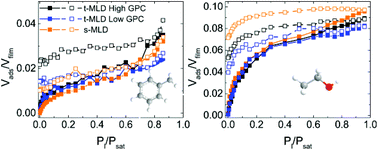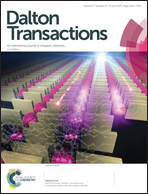Characterization of nano-porosity in molecular layer deposited films†
Abstract
Molecular layer deposition (MLD) delivers (ultra-) thin organic and hybrid materials, with atomic-level thickness control. However, such layers are often reported to be unstable under ambient conditions, due to the interaction of water and oxygen with the hybrid structure, consequently limiting their applications. In this contribution, we investigate the impact of porosity in MLD layers on their degradation. Alucone layers were deposited by means of trimethylaluminium and ethylene glycol, adopting both temporal and spatial MLD and characterized by means of FT-IR spectroscopy, spectroscopic ellipsometry, and ellipsometric porosimetry. The highest growth per cycle (GPC) achieved by spatial MLD resulted in alucone layers with very low stability in ambient air, leading to their conversion to AlOx. Alucones deposited by means of temporal MLD, instead, showed a lower GPC and a higher ambient stability. Ellipsometric porosimetry showed the presence of open nano-porosity in pristine alucone layers. Pores with a diameter in the range of 0.42–2 nm were probed, with a relative content between 1.5% and 5%, respectively, which are attributed to the temporal and spatial MLD layers. We concluded that a correlation exists between the process GPC, the open-porosity relative content, and the degradation of alucone layers.



 Please wait while we load your content...
Please wait while we load your content...